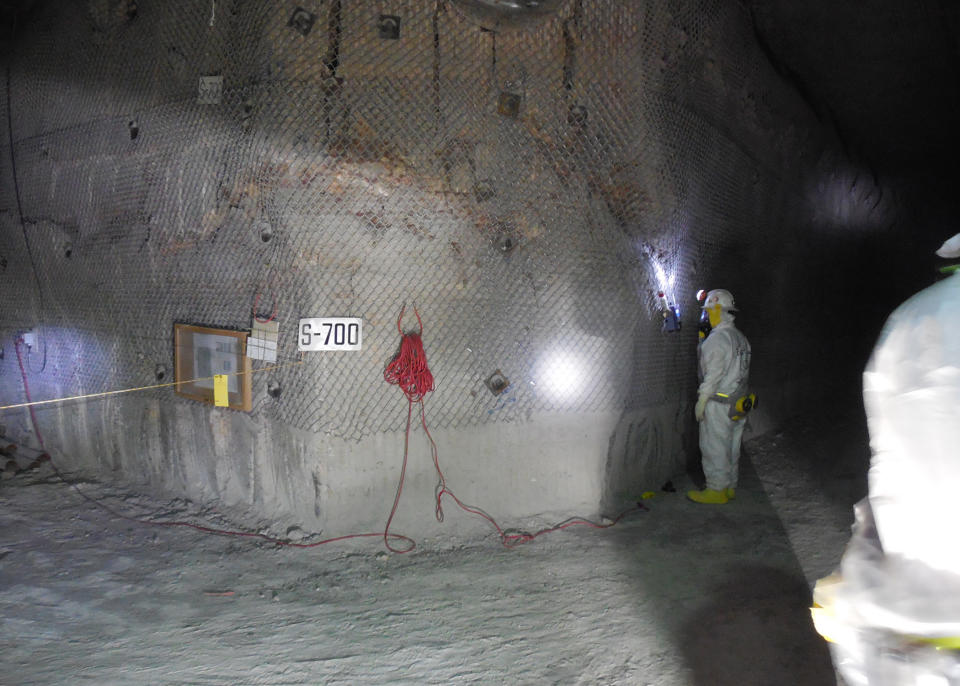Management, safety cited for radiation release
ALBUQUERQUE, N.M. (AP) — A radiation release from the federal government's underground nuclear waste dump in southeastern New Mexico was the result of a slow erosion of the safety culture at the 15-year-old site, which was evident in the bungled response to the emergency, federal investigators said in a report released Thursday.
The report from the U.S. Department of Energy's Accident Investigation Board cited poor management, ineffective maintenance and a lack of proper training and oversight at the Waste Isolation Pilot Plant near Carlsbad. The report also found that much of the operation failed to meet standards for a nuclear facility.
The series of shortcomings are similar to those found in a probe of the truck fire in the half-mile-deep mine just nine days before the Feb. 14 radiation release that shuttered the plant indefinitely.
Given the latest findings, watchdog Don Hancock said the leak that contaminated 21 workers with low doses of radiation in mid-February was a "best-case scenario."
"Everything conspired for the least bad event to occur, based on what we know — and there is a still a lot we don't know," he said.
Last month, the head of the Defense Nuclear Safety Board, which has staff monitoring the Waste Isolation Pilot Project, called the accidents "near misses."
Defense Nuclear Facilities Safety Board Chairman Peter Winokur said that for six days after the fire, no underground air monitors were operational, meaning that if that system had failed when the leak occurred Feb. 14, "or if the release event had occurred three days earlier, the release of radioactive material from the aboveground mine exhaust would have been orders of magnitude larger."
DOE Accident Investigation Board Chairman Ted Wyka previewed the findings of the latest report at a community meeting Wednesday night, identifying the root cause as a "degradation of key safety management and safety culture."
With the source of the leak still unknown, the DOE's investigation focused on the response to the emergency and to the safety and maintenance programs in place. Shortcomings were found at almost every step, from a more than 10-hour response to the initial emergency alarm to a bypass in the filtration system that allowed the radiation to escape above ground.
"The bottom line is they failed to believe initial indications of the release," Wyka said.
Hancock said part of the problem is that the site has hired more workers with experience in local potash mines and fewer with the proper nuclear training. The original contractor for the site, he said, was Westinghouse, which had a lot of nuclear experience and brought in workers with radiation experience. The site is now run by a different contractor, Nuclear Waste Partnership.
"Over time, some folks have stayed in Carlsbad, but a lot of them have moved on," he said. "Then the pressure was to hire local people, hire local people — jobs, jobs, jobs. So you hire local people with no experience in radiation but do have experience in mining. What do you expect you are going to get?"
Bob McQuinn, who took over as president and project manager of Nuclear Waste Partnership shortly after the accidents, acknowledged that much work needs to be done to make the federal government's only permanent repository for low-level, or so-called transuranic waste, operational again. He also detailed a series of changes in management, training and operations to "assure that every hazard that is posed by WIPP is examined" and proper safeguards are put in place to bring the site "from a world-class mining operation to a world-class nuclear operation."
Crews are still working to identify the source of the leak, which sent low levels of radiation into the air around the plant, but officials believe it occurred in the area where toxic waste was last being handled. Officials Wednesday night said there were people working in that area at the time of the fire, but they did not say what they were doing. They did say no waste was being handled at the time of the fire.
Waste at the plant is stored in panels, which are a series of rooms cut out of underground salt beds. Five of those panels are full and have already been sealed. Panel 6 is full but has not yet been sealed. Panel 7 is the current active storage area, where contamination was found last week.
A team made it back into Panel 7 on Wednesday, but did not find any evidence of a roof collapse or damaged waste containers.
___
Follow Jeri Clausing on Twitter @jericlausing



